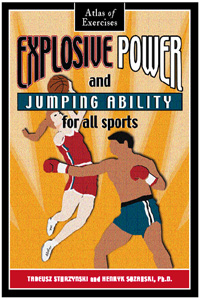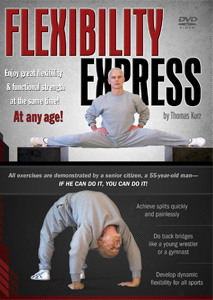by Thomas Kurz
This is the third article in a series dealing with important concepts and principles you should keep in mind when designing and conducting your strength training. This one is about a bias to rely on strength. The previous one was about strength goals and the amount of strength training a fighter needs.
Danger of forming bias to rely on strength
Motor orientation is an inner readiness to carry out a skill in a habitual manner. Skill training ought to form in an athlete a motor orientation that is most suitable for the character of the movements in the skill. Motor orientation is formed by dominant exercises, so an excessive resistance in sport-specific strength training (see definition of general, directed, and sport-specific exercises in Science of Sports Training) forms the wrong motor orientation — a bias to rely on strength. Such a bias spreads to all the activities of the athlete, who then uses excessive muscle force and cannot effectively perfect skills.
Examples of a possible bias to rely on strength:
— Strikes are not loose and lightning fast–because excessive muscle tension stiffens one’s limbs (actually the whole body) and so slows down the strikes. As a general rule, punches and kicks should have a feel of a rope with a stone on its end, not of a whole solid limb launched at a target.
— Grappling throws are telegraphed and their initial phase may be slowed down — because the more force one intends to apply, the more one gets tensed and the longer one sets up. The delay may be only a fraction of a second, but may be enough to lose the opportunity.
The flaws described in these examples may have causes other than the bias to rely on strength. For example, excessive muscle tension may be a subconscious compensation for a weakness or instability at some point of the movement or even a deliberate protection against aggravating an injury. Another cause of excessive tension is an incorrect image of the movement, resulting from poor instruction.
If it is the bias to rely on strength that causes the flaws, then here are the cures:
— Don’t do sport-specific strength exercises with resistance that slows you down.
— Forget your heavy-resistance general strength training when practicing strikes, sparring, and fighting. (An exception may be made for grappling groundwork.)
Why? Maximal strength measured in slow movements or isometrically is not closely correlated to speed strength, explosive strength, and reactive strength. In other words, there is no relation between force values shown in extremely fast movements (i.e., with little resistance) and in slow movements with maximal resistance (Science of Sports Training, p. 142 and p. 153), so do not carry the motor orientation from lifting heavy weights (which you may need to do to stay fit) to your fighting.
To learn much more on strength training for martial arts, see articles at
stadion.com/strength-training-for-sports-and-martial-arts.
This article is based on the book Science of Sports Training: How to Plan and Control Training for Peak Performance. Get the book now and have all of the info—not just the crumbs! Order now!
If you have any questions on training you can post them at Stadion’s Sports and Martial Arts Training Discussion Forum




By “Forget your heavy-resistance general strength training when practicing strikes” you mean just get them out of your mind during technical-tactical practice, correct?
Correct.